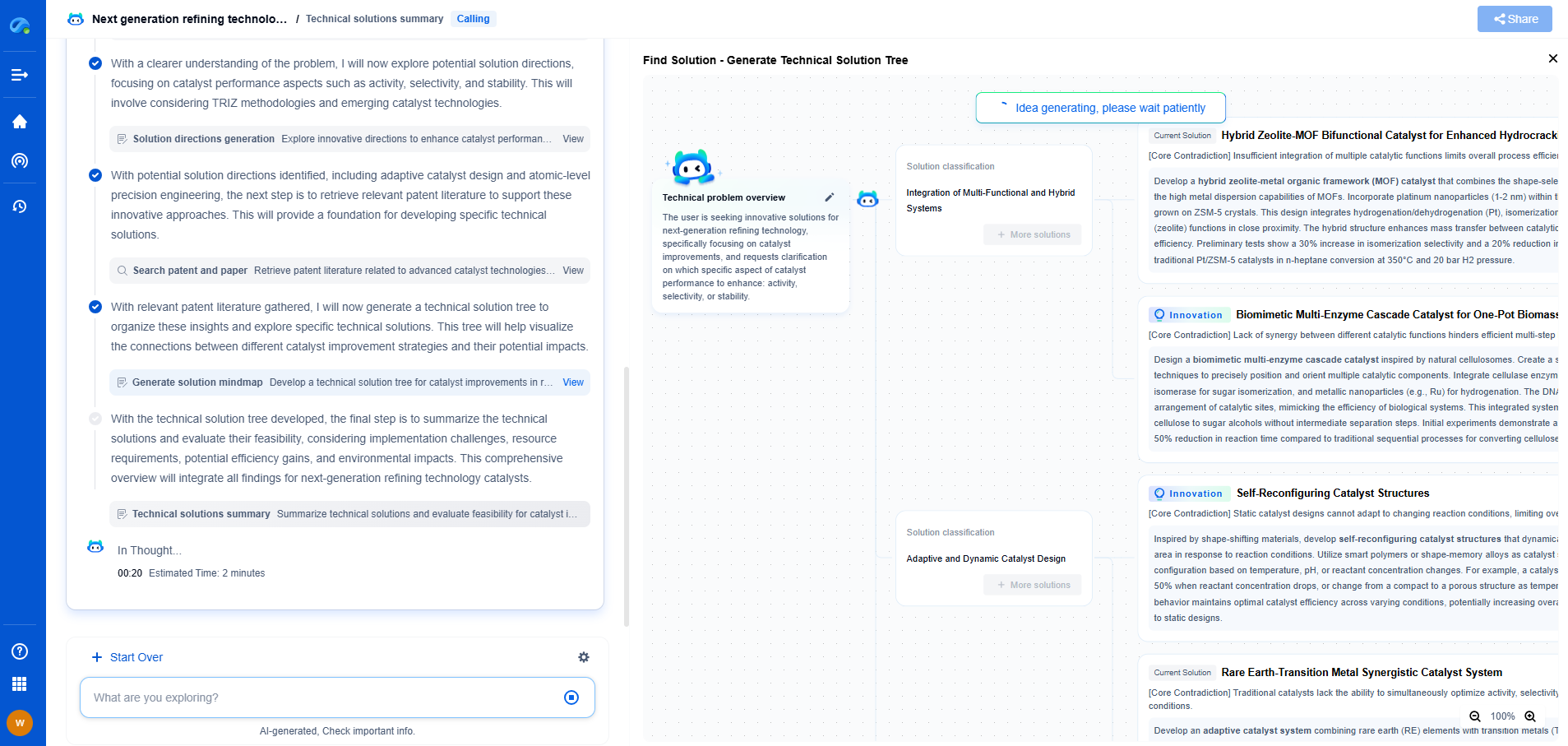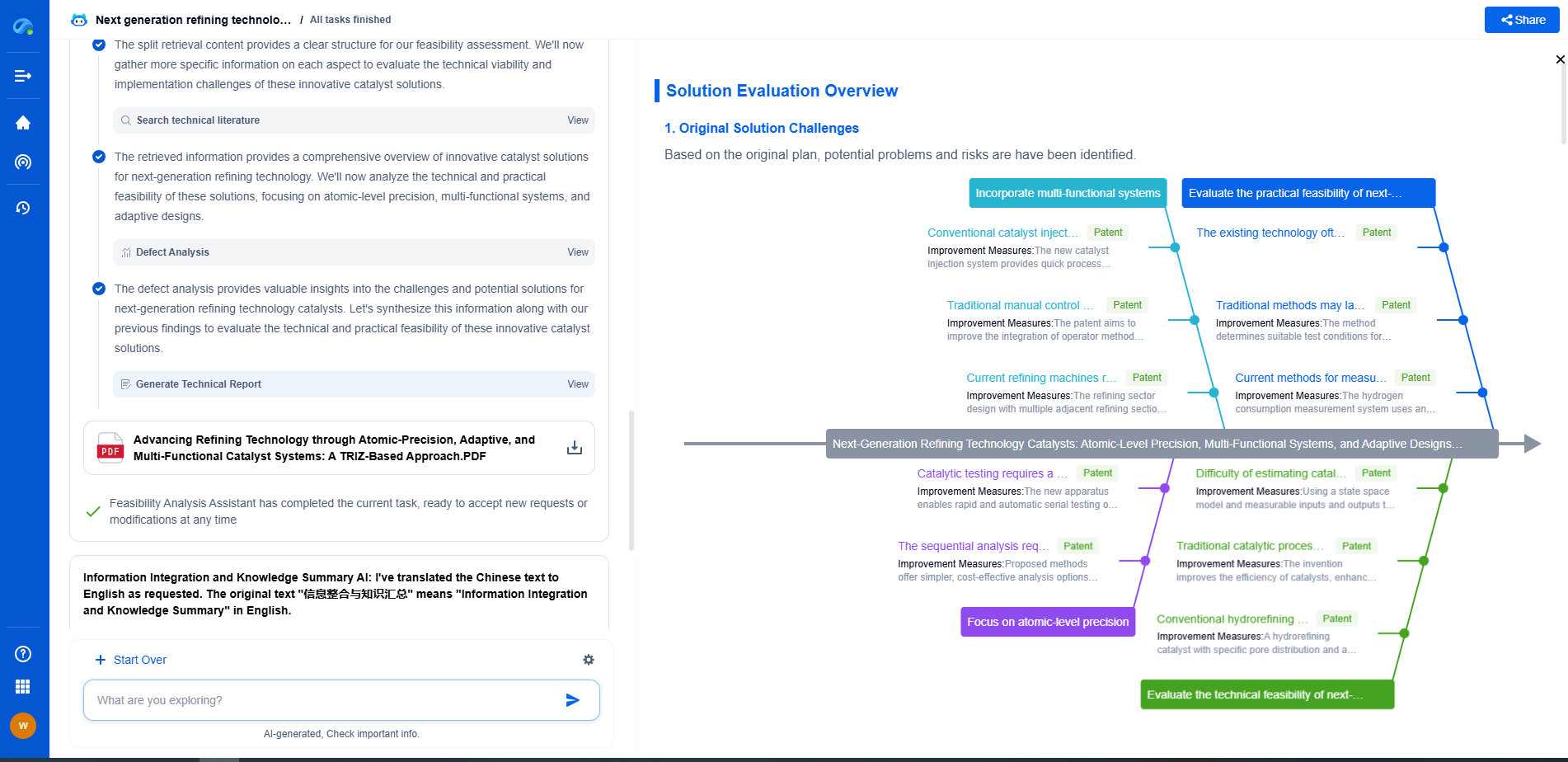What Is Model Pruning?
JUN 26, 2025 |
In the rapidly evolving field of machine learning, model efficiency is a crucial area of focus. With the increasing complexity and size of neural networks, the demand for resources also grows, leading to challenges in deploying these models on devices with limited computational power. This is where model pruning comes into play.
What is Model Pruning?
Model pruning is a technique used in machine learning to reduce the size of a neural network by eliminating redundant or less important parameters. The aim is to create a smaller, more efficient model without significantly compromising the model's accuracy. This process can lead to faster inference times, reduced memory usage, and lower energy consumption, making it particularly attractive for deployment on edge devices such as smartphones and IoT gadgets.
Types of Model Pruning
There are several approaches to model pruning, each with its unique methodology and benefits:
1. **Weight Pruning**: This approach involves removing individual weights that have minimal impact on the model's predictions. Weights are considered for pruning based on their magnitude, with smaller weights being more likely to be pruned. This is a fine-grained pruning technique that can significantly reduce model size.
2. **Node Pruning**: Also known as neuron pruning, this method targets entire neurons or nodes within a layer. By removing nodes that contribute little to the output, node pruning can simplify the network architecture and improve efficiency.
3. **Layer Pruning**: In this technique, entire layers that contribute the least to the model’s performance are pruned. Layer pruning is more drastic and is usually used when there is substantial redundancy across layers.
4. **Structured Pruning**: This involves removing structured components of the model, such as channels or filters in convolutional networks. Unlike unstructured pruning, structured pruning maintains the regular structure of the model, which can be beneficial for hardware optimization.
The Process of Model Pruning
Model pruning typically follows a multi-step process:
1. **Training**: Initially, a baseline model is fully trained to achieve high accuracy. This step ensures that the model learns the underlying patterns in the data effectively.
2. **Pruning**: After training, the pruning process begins. Depending on the chosen method, certain weights, nodes, or layers are identified as candidates for removal. This step may involve setting thresholds for pruning or using algorithms that determine which components can be pruned without degrading performance.
3. **Fine-Tuning**: Once pruning is complete, the model may lose some accuracy. Fine-tuning involves retraining the pruned model to regain as much performance as possible. This step is crucial to optimize the pruned model’s capabilities.
4. **Evaluation**: Finally, the pruned model is evaluated against the original model to compare performance metrics such as accuracy, inference time, and memory usage. The goal is to achieve a balance between model size and performance.
Benefits and Challenges of Model Pruning
Model pruning offers several advantages:
- **Efficiency**: Pruned models require less computational power, making them ideal for real-time applications on resource-constrained devices.
- **Scalability**: Smaller models are easier to scale and deploy across various platforms and devices.
- **Cost-Effectiveness**: Reduced resource demands can lead to lower operational costs, particularly in cloud-based environments.
However, model pruning also presents challenges:
- **Complexity**: The pruning process can be complex and requires careful tuning to avoid significant loss of model accuracy.
- **Potential for Over-Pruning**: Excessive pruning can lead to underfitting, where the model loses its ability to generalize well to new data.
- **Need for Expertise**: Implementing effective pruning strategies often requires a deep understanding of both the model architecture and the pruning techniques.
Conclusion
Model pruning is a powerful tool for enhancing the efficiency of neural networks, enabling the deployment of sophisticated models in environments with limited resources. By carefully selecting and implementing pruning strategies, practitioners can achieve significant improvements in performance while maintaining accuracy. As machine learning continues to advance, model pruning will remain a vital technique for those seeking to optimize their models for real-world applications.
Unleash the Full Potential of AI Innovation with Patsnap Eureka
The frontier of machine learning evolves faster than ever—from foundation models and neuromorphic computing to edge AI and self-supervised learning. Whether you're exploring novel architectures, optimizing inference at scale, or tracking patent landscapes in generative AI, staying ahead demands more than human bandwidth.
Patsnap Eureka, our intelligent AI assistant built for R&D professionals in high-tech sectors, empowers you with real-time expert-level analysis, technology roadmap exploration, and strategic mapping of core patents—all within a seamless, user-friendly interface.
👉 Try Patsnap Eureka today to accelerate your journey from ML ideas to IP assets—request a personalized demo or activate your trial now.
- R&D
- Intellectual Property
- Life Sciences
- Materials
- Tech Scout
- Unparalleled Data Quality
- Higher Quality Content
- 60% Fewer Hallucinations
Browse by: Latest US Patents, China's latest patents, Technical Efficacy Thesaurus, Application Domain, Technology Topic, Popular Technical Reports.
© 2025 PatSnap. All rights reserved.Legal|Privacy policy|Modern Slavery Act Transparency Statement|Sitemap|About US| Contact US: help@patsnap.com

